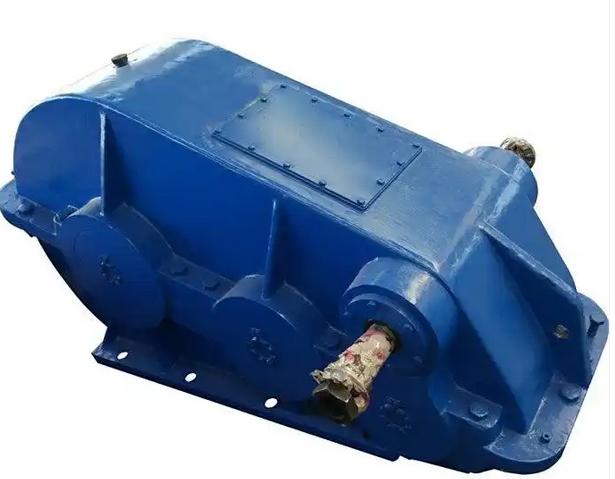Repair steps for lubricating oil leakage fault of ZQH1000-10.35-II reducer
The lubricating oil leakage fault of ZQH1000-10.35-II reducer is usually caused by aging seals, loose connecting bolts of the box, excessive oil filling, and other reasons. The repair steps are as follows:
1. Fault diagnosis: First, stop the machine and carefully observe the oil leakage parts of the gearbox. Common oil leakage points include the input and output shaft seals, the joint surface of the box, the oil drain hole, the oil gauge hole, etc. At the same time, check whether the lubricating oil level is too high, whether there are cracks on the surface of the box, whether the connecting bolts are loose, etc., to preliminarily determine the cause of the oil leakage.

2. Preparation work: Prepare the necessary tools such as wrenches, screwdrivers, vernier calipers, as well as materials such as seals, sealants, lubricants, etc. that may need to be replaced. Ensure that the maintenance site is clean, dry, and has good lighting conditions. At the same time, cut off the power supply of the gearbox and hang a warning sign to prevent accidental start-up.
3. Disassemble related components: If there is oil leakage at the shaft seal, the coupling needs to be removed and the shaft seal end cover needs to be removed. If there is oil leakage at the joint surface of the box, the connecting bolts of the box need to be loosened to separate the upper and lower boxes (be careful not to damage the joint surface). During the disassembly process, it is important to properly place the components to avoid loss or damage.
4. Inspect components: Check if the seals are aging, deformed, or damaged. If there are any issues, replace them with new seals. Check the surface of the shaft for wear, scratches, etc. If there are, repair or polish it smooth to avoid affecting the sealing effect. At the same time, check whether the joint surface of the box is flat, whether there is any collision or deformation. If there is, it needs to be repaired. In addition, it is necessary to check the quality and quantity of the lubricating oil. If the lubricating oil deteriorates or the quantity is too high, it needs to be replaced or adjusted.
5. Dealing with oil leakage: For static sealing points (such as the joint surface of the box), the oil stains, impurities, old sealant, etc. on the joint surface can be cleaned first, then polished with an angle grinder or sandpaper to expose the original metal color, and then cleaned with anhydrous ethanol. After drying, a suitable layer of sealant can be evenly applied. For the shaft seal, if there is wear on the shaft surface, it can be repaired by brushing, spraying, or installing a separable oil seal. When installing new seals, pay attention to the correct installation direction to ensure that the seals are installed in place.
6. Reassembly: Assemble the components in the reverse order of disassembly, tighten the connecting bolts, and pay attention to evenly tightening the bolts to avoid uneven stress on the joint surface of the box. For the shaft seal end cover, ensure that it is installed firmly and fits well with the shaft.
7. Add lubricating oil: According to the requirements of the reducer, add an appropriate amount of lubricating oil to make the oil level reach the range specified by the oil gauge.
8. Trial operation and inspection: Connect the power supply, let the gearbox run without load for a period of time, observe whether there is any oil leakage in various parts, and check whether the running sound and temperature of the gearbox are normal. If any abnormalities are found, the machine should be stopped for inspection and troubleshooting in a timely manner.

